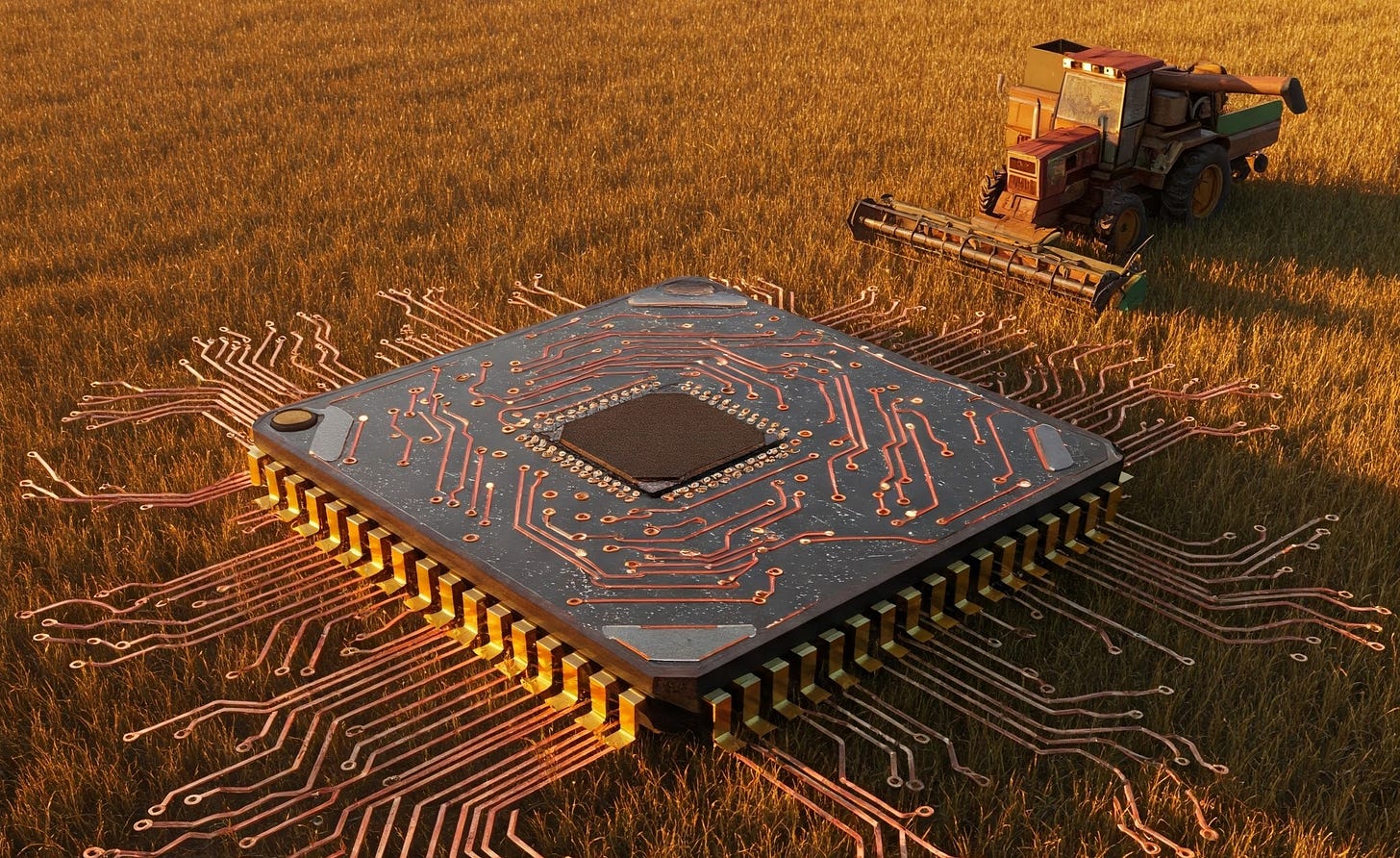Coding Crops: The Computer Science Takeover of Agricultural Engineering
Universities are hiring more computer scientists for agricultural roles, but what does that mean for the future of agricultural engineering?
Universities are increasingly prioritizing computer scientists for agricultural roles, particularly within the cutting-edge domain of Precision Agriculture. But what does this escalating trend truly mean for the future of agricultural engineering, and for the very sustainability of our food systems?
Precision Agriculture, the technology-driven push to maximize crop yields and resource efficiency, is experiencing a seismic shift. A troubling trend has emerged: Biosystems Engineering programs, historically the very heart of agricultural technology innovation, are signaling that a PhD in their own field may no longer be sufficient for academic success in the fiercely competitive world of Precision Ag. They're increasingly prioritizing candidates with PhDs in Computer Science/Engineering or Electrical Engineering for faculty positions. Don't believe it? A simple, sobering review of recent U.S. university job postings and hiring reveals the stark reality of this potentially damaging evolution.
This alarming shift raises profound questions about the mission and direction of agricultural engineering programs themselves. Are these programs adequately preparing students for the evolving realities of the academic job market, or are they inadvertently creating a disconnect between their graduates' qualifications and the demands of university hiring committees? Why would aspiring academics not simply pursue those Computer Science (CS) or Electrical Engineering (EE) programs directly if that's where the perceived value lies? And if fewer and fewer individuals are pursuing Agricultural Engineering PhDs because they're increasingly seen as less relevant within the current research landscape, are these foundational programs effectively serving their purpose in training the next generation of agricultural innovators?
The answer, it seems, is a pervasive belief that Artificial Intelligence (AI) and robotics are the "hammers" for every agricultural "nail" these days. And who, in this current paradigm, is perceived to wield those hammers best? Computer scientists, of course! This narrow focus risks oversimplifying the intricate biological and environmental challenges inherent in agriculture.
While computer scientists undeniably bring invaluable skills in data analysis, algorithm development, and automation, ignoring or marginalizing core agricultural engineering expertise in academia can severely hinder genuine interdisciplinary collaboration. This often leads to the development of technology-driven solutions that, despite their sophistication, may not fully address the complex, multifaceted needs and inherent constraints of real-world agricultural systems. A truly interdisciplinary approach, where agricultural engineers possess both robust computing skills and a deep, nuanced understanding of agricultural systems, is not merely beneficial—it is absolutely crucial for developing truly sustainable, effective, and ethically sound solutions to the complex challenges facing our global food systems.
If university departments prioritize hiring computer scientists at the expense of agricultural engineers, there's a significant risk of neglecting core agricultural principles within the curriculum. This could result in graduates with strong coding skills but a dangerously limited understanding of critical areas such as soil science, plant physiology, hydrology, entomology, and other foundational agricultural principles. Such a knowledge gap could lead to the development of "smart" farming technologies that are fundamentally unsound or even detrimental in practice. This trend could also exacerbate an already looming shortage of qualified faculty and researchers equipped to train the next generation of truly holistic agricultural engineers.
Furthermore, this trend could further empower computer science departments within universities, potentially marginalizing agricultural engineering programs and diminishing their influence within the broader academic landscape. This might translate into reduced funding, fewer dedicated resources, and a weakened voice for agricultural engineering in shaping the future of agricultural research and education.
Moreover, true, disruptive innovation often arises not from siloed expertise, but from unexpected connections forged between diverse perspectives and different disciplines. By primarily hiring within computer science, departments may inadvertently be limiting the range of ideas, methodologies, and approaches to solving complex agricultural challenges. A purely computational lens, however powerful, cannot fully capture the biological nuances, ecological interdependencies, and socio-economic factors that are central to sustainable agriculture.
So, this burgeoning trend not only risks a "brain drain" from agricultural engineering itself, but also threatens genuine interdisciplinary collaboration, diminishes the essential focus on agricultural fundamentals in both research and education, and could ultimately stifle the truly impactful innovation desperately needed in the field.
Agricultural engineering programs are at a critical juncture. They need to proactively adapt their curricula to integrate advanced computing skills—from AI and machine learning to robotics and data analytics—while steadfastly maintaining and strengthening a robust foundation in agricultural sciences. Ultimately, a balanced educational approach is vital: one that equips agricultural engineers with cutting-edge computing skills while preserving and deepening their indispensable, long-rooted understanding of agricultural fundamentals. This integrated skillset will enable them to not just build technology, but to build the right technology for the unique complexities of agriculture.
We need a balanced approach that profoundly values both agricultural domain expertise and cutting-edge technology to truly advance sustainable agriculture. This requires a concerted, collaborative effort from both agricultural engineering and computer science departments to bridge traditional disciplinary divides, align their strategic goals, and ensure that the curriculum adequately prepares students for the multifaceted and evolving needs of the field. Only then can we ensure that the future of agriculture is not just technologically advanced, but also ecologically sound, economically viable, and socially responsible.


